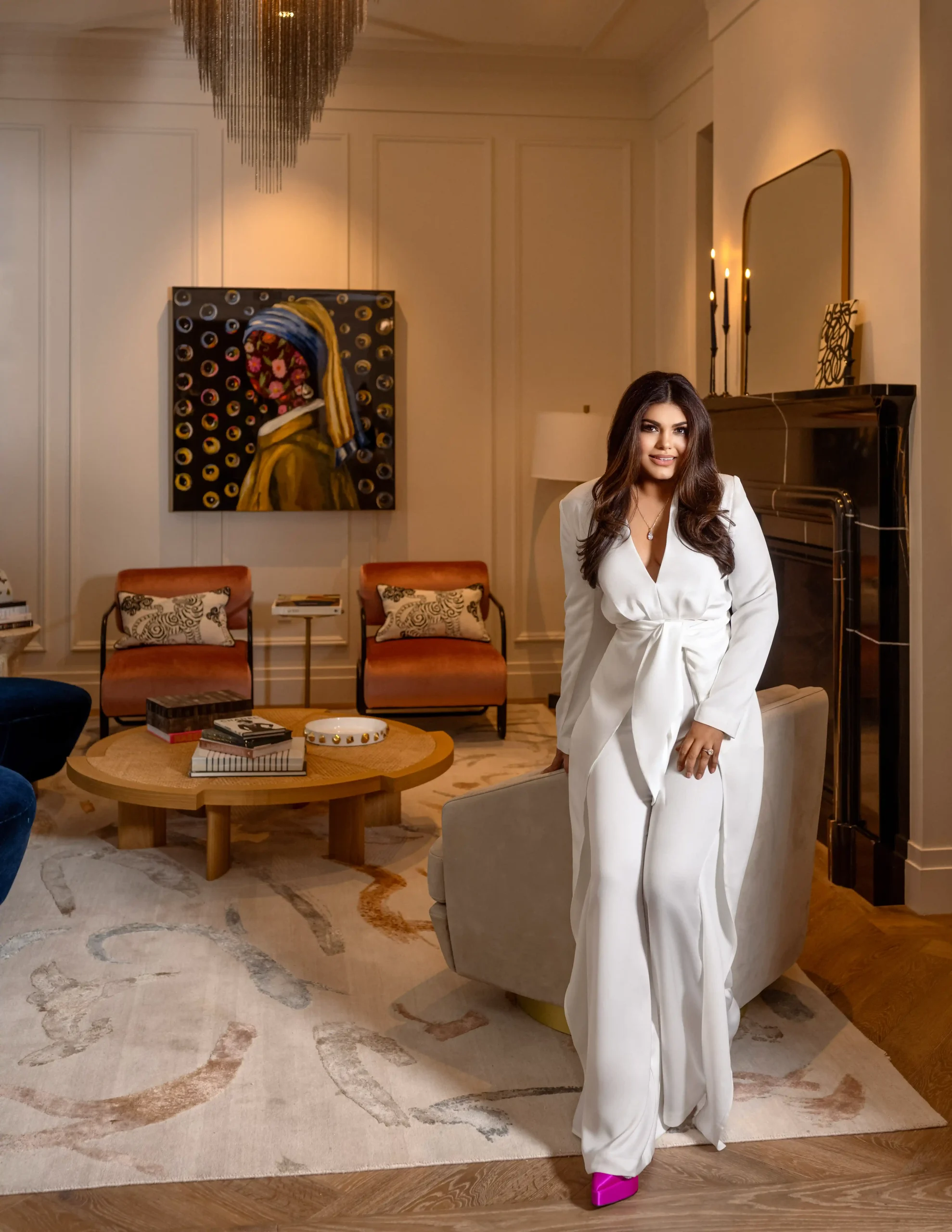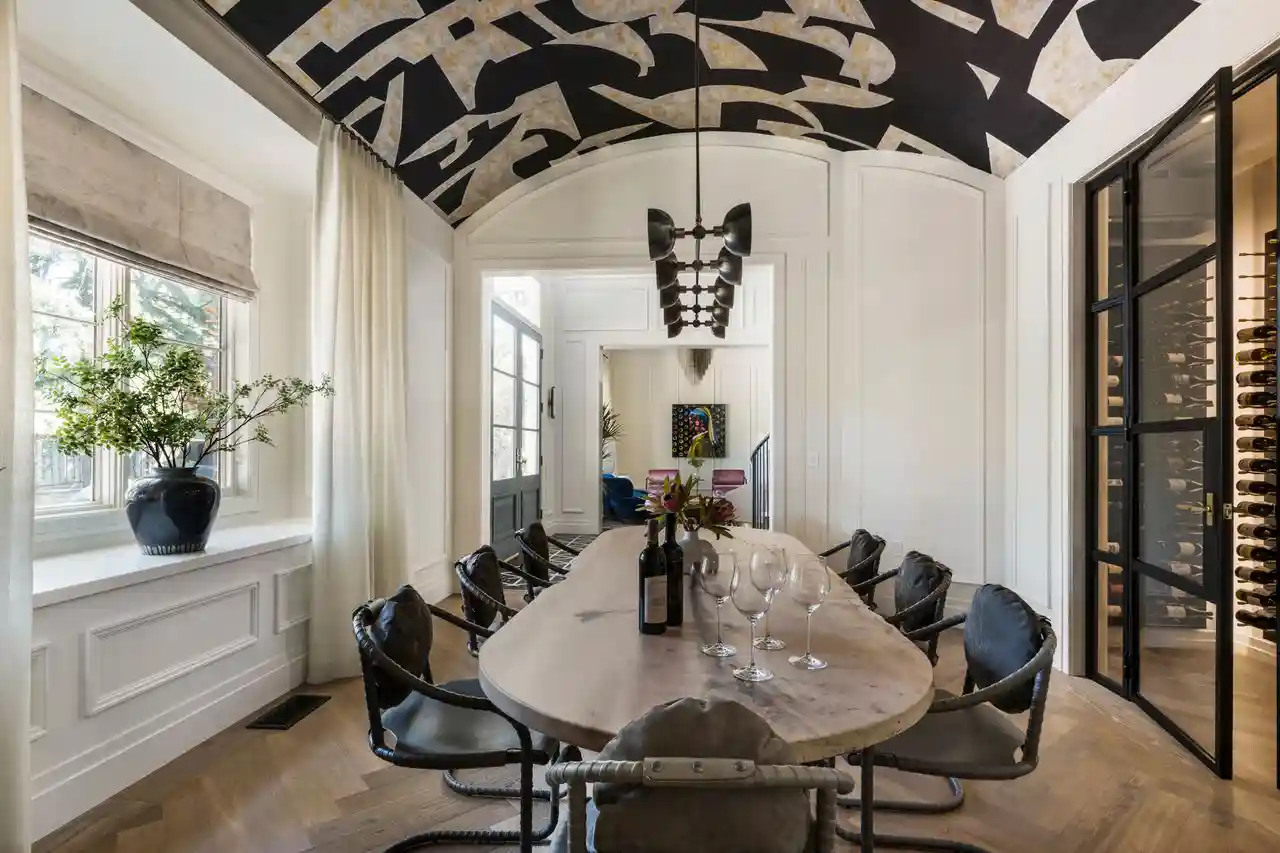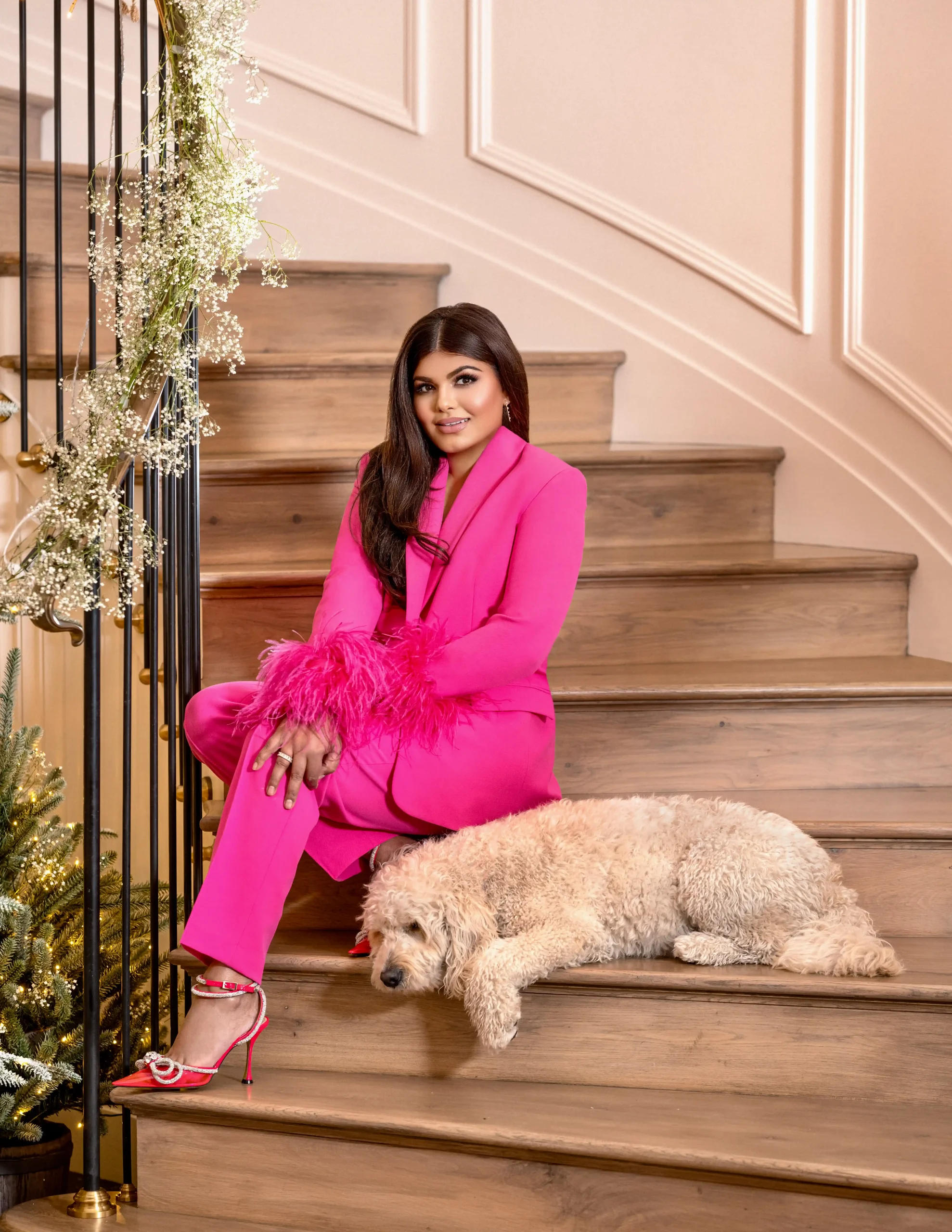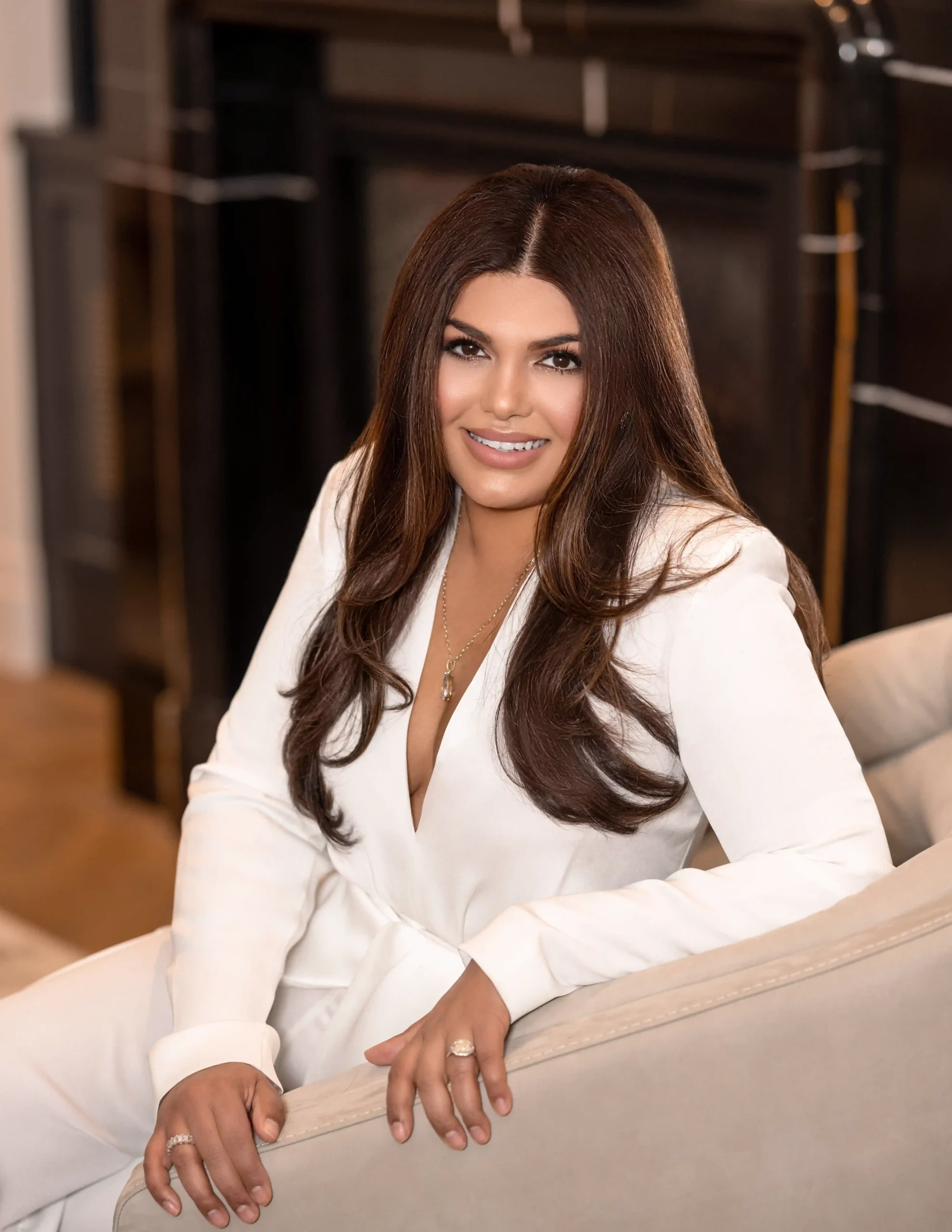Art, Craft, Fashion, and Fine Furnishings
Design Entrepreneur, Sabah Mansoor, Shares Her Journey From Terracotta To Luxurious Interiors.

At the age of nine, Sabah Mansoor was already an apprentice and a keen observer, eager to learn from generations of potters. Their days blended together in the same rhythm – mixing, cutting, molding, and shaping damp terracotta into practical vessels and decorative forms. She liked the earthen smell of clay and mud, taken straight from the Deccan plateau where Bangalore sits. She liked the cool, weighted material in her hands and the tactile experiences of creating. Her city, like many others in India, is host to artisans and craftspeople whose work becomes synonymous with specific neighborhoods. Such is the case for Bangalore’s ‘Pottery Town’, one of the enclaves nestled near the city’s winding ‘Pottery Road’. Stepping into this world of pottery and clay for weekend apprenticeships was one of Sabah’s joys as a child, and a signpost on her path to formal education in art, textiles, and design.
“When I was growing up, there wasn’t anything offered like ‘art class’ for children, or a studio dedicated to ‘lessons’. You became an apprentice. That was the model for learning a handcraft. You entered a room of multi-generational artisans working together to create. It was immersion. You helped the artisans; by helping you learned what they knew and could eventually create as they did. You were there to continue a tradition. ‘Design’ wasn’t yet seen as a career or a discipline. You learned so you could take part as one of many, continuing these traditions of the arts.”
Family life for Sabah and her two sisters included their parents’ department store in a popular commercial district of Bangalore. The sisters grew up surrounded by goods of all descriptions – furnishings, home wares, linens, clothing, and accessories. They were also privy to the conduct of business, the nature of importing and exporting, as well as the importance of customer service and integrity.

Sabah’s first introductions to a life outside of India came by way of the Italian nuns who taught at her English-immersion school. “It was a Catholic school. The nuns were strict about things like the measurements of our uniforms, our entry and conduct on school grounds, and our studies.” It was through the nuns – their stories and descriptions of Italy and elsewhere, or their occasional slip in and out of Italian language – that the world beyond Bangalore and beyond India began to take shape for Sabah in a more tangible form.
At 16, Sabah approached her parents with the desire to attend art school, perhaps in Italy or at the new university in Bangalore. “The notion of making your own, stand-alone, monetized artwork, or your own designs in a professional capacity, was still quite foreign to the minds of my parents. They really couldn’t grasp what I wanted to do nor how I might ‘work’ in a field referred to as ‘design’. We agreed to revisit the conversation; my priority was to finish high school.”
Changes in India began to happen rapidly in the late 1990s. Trade embargoes lifted, foreign entertainment started streaming through television, productivity levels increased, and a range of shops and retailers were introduced. It seemed opportunities were swiftly opening before Sabah and cultural perspectives were changing. The new university in Bangalore, Shristi School of Art, Design, and Technology* opened just a couple of years before she graduated from high school. “I was so excited to attend! There was great energy. We were all involved with something new, something growing, a community, and a vision. The university was an experiment. We were energized by the creativity of our teachers and their global experiences. They studied at places like the Massachusetts Institute of Technology and worked for creative companies like IDEO. It broadened my knowledge of art and design, and significantly expanded my worldview.”
At Shristi, Sabah spent the first two years studying a broad base of subjects from furniture and carpentry to film. In her final three years, she specialized in textiles. For this part of the program, Sabah lived and worked with artisans throughout India. She learned the Indonesian handcraft of Ikat, a combination of dyeing and hand-weaving. She apprenticed in print and dyeing under master craftsmen in the northwestern state of Rajasthan, studied embroideries from the ‘Banjara’ (gypsy) women in her home state of Karnataka, and wovens in India’s northeastern city of Calcutta.

One of the most formative design and apprenticeship experiences for Sabah was with a Tibetan artist, Tenzin Yang, who lived in Darjeeling making felt hats and bags. Sabah recalls, “I learned how to create felt, which her family did for generations. And, because she had apprenticed under a Japanese artist to learn the techniques of Shibori, I learned Shibori too…I’ve never met anyone quite like Tenzin. It was as if the methods of Shibori and her appreciation for color were spiritual, meditative practices. She would spend up to 30-40 hours on wrapping, knotting, and tying (Shibori methods) before she began dyeing her fabrics. She was very methodical and her approach had a mathematical quality to it. Tenzin could visualize highly sophisticated patterns and knew exactly how to manipulate the fabric before dyeing it in order to achieve the resulting designs. Through her work and her methods, she taught me a deeper practice of patience. Learning from her was a rich experience in creativity and personal growth.” Years later, Sabah used her acquired knowledge of felting and Shibori for her master thesis collection shown at New York Fashion Week.
While Sabah’s travels, apprenticeships, and studies were interesting; she received a boost of confidence after winning a nationwide competition hosted by Elle18, a cosmetic and nail polish line. Sabah developed a clear polish with an explosion of sparkles. “While this kind of ‘glitter bomb’ polish is everywhere now, it was completely novel in India at that time. We didn’t have many beauty brands. ‘Make-up’ meant kohl eyes and a little lip color. Winning the competition was so encouraging – I felt buoyant and I was resolved to continue my creative pursuits as a career.” Sabah felt especially honored when Elle18 retailed their version of her winning concept and named it Sabah Sparkle.
Sabah’s early professional career began in Delhi, the capital of India, at a home furnishings store, Shades of India. Design, development and sourcing were all included in her responsibilities. A young professional with an entrepreneurial spirit, Sabah eventually shifted her career by launching an accessories line featuring shoes and handbags. She was innovative and enjoyed exploring the use of unconventional materials in the growing accessories market. Sabah focused on surface design, incorporating jewels, silks, brocades, and other textures, applications, and fabrics not commonly used. Her line, Peach Cobbler, sold alongside established fashion labels across India in specialty boutiques like Ogaan and Ensemble and locally at Raintree, Collage, and Folio. After a successful five-year run, Peach Cobbler was approached and subsequently purchased by another designer, allowing Sabah the opportunity to pivot again – this time, half the world away.

“I thrive with new opportunities. Even as I prepared to marry Asim, I wasn’t hesitant to move to the U.S. and establish our life together there.” When she arrived in California’s Bay Area, Sabah decided to pursue graduate studies. She enrolled in an MFA program with a double major in knitwear and fashion design at the School of Fashion, Academy of Art University in San Francisco. Her final thesis collection was one of the few selected to debut at Mercedes-Benz New York Fashion Week at Bryant Park in February 2010.
Sabah’s collection reflected her appreciation for artisanal crafts and textiles, as well as her technical skills. Her philosophy was to expand conceptual boundaries between art, craft, and design, drawing upon the various techniques and blending them to merge in a way that didn’t define one more than the other. The collection included her hand and machine knits and embroideries. She also employed techniques like wet-felting, and the knotting, tying, and binding of Shibori. She used these methods to create ‘resists’ to facilitate a ‘sculptural silhouette’ from the knitwear. Inspired by chandeliers (and perhaps her love of sparkles), Sabah sought to add visual and layered dimension to her black and charcoal-colored collection. Ever resourceful, she located an artisan in India to customize jewel-shaped crystals and faceted glass beads, which she later hand-fastened to each garment.
Following her New York experience, Sabah’s collection was featured in the windows at Neiman Marcus in San Francisco for Fashion’s Night Out, a series of events created at the behest of Vogue’s Anna Wintour to support the fashion industry. In 2012 Sabah was selected for Macy’s innovative Fashion Incubator business and design mentorship program. She also co-designed a luxury knitwear collection that was recognized as one of four emerging brands for Gen-Art’s 15th Annual Fresh Faces in Fashion. Prior to taking a break to focus on raising her young children, Sabah was co-founder and COO of a decorative arts brand, and responsible for all aspects of design and production. The brand was later sold through FabIndia, a well-known multi-city retailer based in her home country.
In 2020, she opened Sabah Mansoor Design (SMD), a boutique interior design firm located in Atherton, California, the heart of Silicon Valley. “Personally, I’ve always enjoyed architecture and interiors. Whenever we’ve purchased a home, I’ve taken charge of creating our interior spaces. I’ve been a casual consultant for family and friends’ interiors for many years. Pulling together my combined expertise in textiles, development, sourcing, furnishings, and design, to transition into interiors professionally seemed like the perfect fit.”
SMD’s projects range from re-furnishing rooms to home renovations and full residential builds from the ground up. While some interior designers have a signature style, identifiable with each project, Sabah prefers to use her expertise in partnership with the client’s personal style and needs.
Today, Sabah stands in a home of her design while being photographed for Luxury Trending. She shares, “The family wanted a modern home with traditional elements. It was important to create a space that felt lived in and curated, rather than ‘designed’. This home was a complete remodel. I created the interiors to welcome the beauty and rhythms of family life, allow for fluid entertaining between the indoor and outdoor spaces, and provide quiet areas to retreat into. The furnishings are a combination of old and new, family heirlooms and children’s artwork, sourced vintage pieces, and bespoke creations.”
When asked how she might encourage other women, especially those interested in creative careers, Sabah replies, “It’s never too late to start something new. Take that leap to pursue what kindles your joy and passion…Education in art and design is like studying a language; you must take the time to nurture it through exposure to various art forms, nature, and science. Diversity broadens your understanding and the development of your skills. Most importantly, never stop being creative.”
*Now Shristi Manipal Institute of Art, Design and Technology
SABAH MANSOOR @sabahmansoordesign
Writer: Edith Mead Barker
Copy Editor: KIEDO VILLANUEVA @kei_villanueva
Hair Stylist: Yajaira Gonzalez @yayasglambar
Make-Up Artist: Anita Siddiq
Art Director: NIGEL JOHN DEL MUNDO @nigeldelmundp
Photographer: VINCENT GOTTI @vinniegotti
Location courtesy of Sabah Mansoor Design @sabahmansoordesign
Home Interior Photographer: David Livingston and Lauren Anderson

